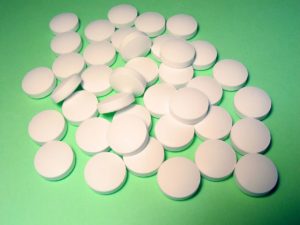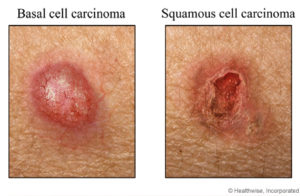 A recent large study found that getting high levels of vitamin D from foods, but not supplements, is linked to a lower rate of a common skin cancer (squamous cell carcinoma) years later. Once again: the beneficial health effect is associated with eating real foods, but not supplements.
A recent large study found that getting high levels of vitamin D from foods, but not supplements, is linked to a lower rate of a common skin cancer (squamous cell carcinoma) years later. Once again: the beneficial health effect is associated with eating real foods, but not supplements.
Researchers found an inverse relationship with vitamin A intake and squamous cell carcinoma - those that had the highest dietary intake of vitamin A had a 17 % reduction of the skin cancer during the next 26 years. The inverse associations were highest among those with moles and those who had sunburns during childhood or adolescence.
The high intake group had the vitamin A amount equivalent to one medium baked sweet potato or 2 large carrots each day. Most of their intake came from fruitsand vegetables. Vitamin A (retinoids) is important in keeping skin cells healthy, and retinoids are considered cancer protective (or anticancer) for several cancers.
What foods are high in vitamin A? Plant-based sources of vitamin A (carotenoids, including lutein and lycopene) include orange and yellow fruits and vegetables, such as sweet potatoes, carrots, butternut squash, pumpkin, apricots, cantaloupe, red peppers, tomatoes, as well as broccoli, spinach, and leafy dark vegetables. Animal based sources of vitamin A (retinol) are dairy foods (milk, cheese, yogurt), eggs, some types of fish (e.g. herring), and beef liver. (More information at National Institutes of Health.)
From Futurity: CAN GETTING MORE VITAMIN A CUT SKIN CANCER RISK? ...continue reading "Vitamin A and Skin Cancer Risk"

 A recent
A recent  More studies need to be done, but the possibility of simply taking 500 mg twice a day of
More studies need to be done, but the possibility of simply taking 500 mg twice a day of  Credit: WebMD, Healthwise, Inc.
Credit: WebMD, Healthwise, Inc.